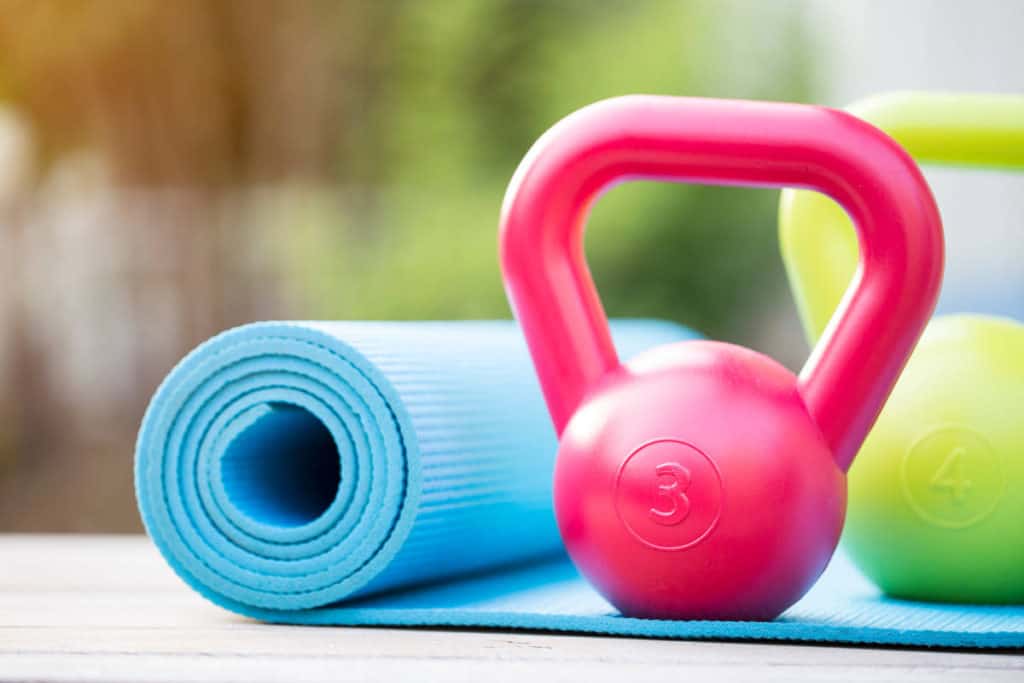Exercise is one of the prerequisites of a healthy, happy life. Most people find something they love to do, whether it’s aerobics, P90-X, or swimming, and they stick with it. It makes sense. Any calorie-burning or muscle-building activity you enjoy is likely to be the most significant contributor to your fitness levels.
The question is, is one exercise truly enough for total body fitness?
Truthfully, you can only do so much for your body if you stick to one form of exercise. Weight and resistance training builds and tones muscles, yoga makes you more flexible and improves your balance and awareness, and cardio is excellent for your heart and lungs.
However, none of these activities targets your muscles, your heart, and your flexibility all at once, which suggests that the only way to hit peak fitness levels is to combine two or more forms of exercise.
Is it possible to Combine Gym Workouts and Yoga? Yes, you can combine both Gym workouts and yoga into your fitness routine. Performing both will help give you an all-around balanced physique.

Gym, Meet Yoga Studio
Traditional fitness enthusiasts don’t often partake in yoga, and you’ll be hard-pressed to find an accomplished yogi (Yoga Practitioner) hitting the gym regularly. In other words, people rarely mix gym exercises with yoga. It’s either one or the other. It doesn’t have to be that way, though.
Combining gym workouts and yoga is a surefire way to unleash the full potential of each exercise. These two have a highly synergistic relationship, curiously enough. One builds strength; the other makes you more agile. Both do wonders for your posture, and both have a positive impact on mental health.
You might wonder, why not enjoy these benefits separately? What do I gain by mixing yoga and gym exercises?
Balance Your Exercise
You run the risk of overdoing an activity if you perform it all the time. If all you do is gym workouts, for example, you might not know when to slow down to let your body recover. Most injuries happen when you’re tired or overworked. Another exercise may help provide the balance of your active life needs.
Improved Body
As I said, no exercise can singlehandedly satisfy all of our fitness needs. To achieve total body fitness, you need to improve your strength, flexibility, and endurance, and you can only make that if you combine different types of exercise.
I like to combine the gym, karate, and walking the dog. I know that walking a dog might not sound challenging, but I find I walk at a faster pace when walking my husky. Karate helps with my flexibility.
Adequate Recovery Time
When you’re following a resistance training program, it requires the presence of mind to know when to rest. Overworking your muscles has a counterintuitive effect where they weaken and waste away instead of increasing in mass and strength.
You can try a deload week every 6 – 8 weeks. On your deload week, you can take the week off the gym or choose to lift lighter weights. I decide to take a week off from the gym to give my body the rest it requires.
The secret to exponential muscle growth is plenty of rest and a protein-rich diet. Yoga provides an avenue, not just for rest and recuperation, but for thorough muscle therapy through techniques that stretch and expand your body.
Twice The Fun
Partaking in only one form of exercise can get monotonous fast. If that’s something you can relate to, then you should consider adding a second type of activity to your routine. It feels fantastic to be able to switch gears from the concrete mindset you visit the gym with to the calm and present attitude required by yoga.
Mixing gym workouts with yoga has more positives than negatives (there are none to speak of). But before you start taking your yoga mat to the gym, you must understand that there is a right way and a wrong way to go about it.

How to Combine Gym Workouts And Yoga
1. Start With One
If you don’t take part in either yoga or gym workouts, don’t start with both of them at once. Instead, focus on one exercise for two to three months first, then afterward, incorporate the other.
You need to establish a routine before you can successfully add another exercise to your activity list. Otherwise, you can easily get overwhelmed. If you feel overwhelmed, you’re more likely to quit.
2. Create a Clear Plan
You need a detailed strategy to help you stay on track. Keeping up with one exercise program is hard enough, so spend some time deciding which muscle groups you want to train and the method you intend to use.
For example, if you want to increase your muscle size and mass, then you need low repetition exercises with high amounts of weight. High repetition exercises with small amounts of weight keep muscles toned–they don’t increase muscle strength or mass, although they do improve muscle endurance considerably.
No matter what your schedule looks like, make sure there is a 48-hour resting period for the muscle groups you intend to train.
3. Learn The Right Yoga
Contrary to popular opinion and what the movies tell us, yoga can be quite intense. Don’t believe me? Ask anyone who’s done power yoga before. It’s no walk in the park, that’s for sure.
Power yoga and light Hatha are the two types of yoga you need to understand. The former is a real muscle buster that engages and pushes muscles to the limit. The latter, which also goes by the name restorative yoga, is a calm, peaceful exercise that promotes awareness, and requires a strong mind-body connection.
You can’t schedule a power yoga session the next day after an intense chest workout. Your muscles will not get enough time to recover and to get the most out of power yoga; your body must be in peak physical condition.
You run the risk of overworking your muscles if you misuse yoga.
4. Be Open-minded
This is a time for experimentation. Try different strategies to find what works best for you. You will know what works and what doesn’t by listening to your body. Are you overly exhausted by the end of your workout? Are you getting satisfactory results? If not, adjust your schedule and try again.
Remember, you’re in unchartered territory. Only you can create an exercise routine that works for you. Nevertheless, stick to authentic iterations of yoga, such as Ashtanga and Iyengar yoga. The reason being, these exercises are rooted in tradition and offer tremendous mental benefits that you may miss out on with a modified type of yoga. Everybody’s bodies are different; what works for one person might not work for you.

5. Take Your Time
At first, it will be a battle and a seemingly unending one at that. You may experience new aches and pains as your body learns the new routine, but ultimately, every sore muscle pays off.
Keep an eye on your physical condition. Make sure you’re not too exhausted, and that you get enough time to recover, plus a healthy diet. How will you know if you’re not eating, right? If you’re weak, cranky, or unmotivated to work out, that’s a sign of low energy. If your muscles seem to stagnate in size, then you need more proteins in your diet.
Why do I Need Weight Training in The First Place?
In a lot of ways, yoga seems like the perfect exercise. It tones muscles, gets the heart pumping, and can dramatically improve our endurance. However, it too has some significant flaws.
Yoga is an exercise for balance and flexibility. Seasoned yogis find that the better they get at executing challenging poses, the more strength they need to keep injuries at bay.
Weight training increases bone and muscle density considerably. Stronger bones and muscles are less likely to reach their breaking point, plus they enable you to execute much stronger yoga poses.
Furthermore, weight training directly elevates your yoga physique. Think about it, if you use dumbbells for overhead presses, you get arms and shoulders that are stronger and better at poses like the handstand.
Besides, lifting weights is the only way to keep your muscle growth rate from stagnating. Fast-twitch muscle fibers, known to enhance muscle speed and power, only come from weightlifting.
Why do I Need Yoga in The First Place?
Here’s a reality check: in time, you will hit a plateau no matter what exercise you enjoy doing. That means no more muscle gains, regardless of diet and workout intensity. Why not enhance other aspects of your physique?
Think of yoga as a complementary exercise. While you increase muscle density and strength, you can also make your body more flexible and agile with yoga. But the truth is, yoga’s most significant benefit is its positive impact on mental health.
Plus, yoga boosts awareness. An enriched mind-body connection is one of the traits that every seasoned yogi has. It affects the quality of life, results in better mood management, and can be useful for breaking bad habits and addictions.
So, as vital as it is to exercise your muscles, your body is made of much more than bone and tissue. Physical strength is impressive, but total body fitness includes peak flexibility and balance, plus a healthy mind.

What Does the Perfect Fitness Regimen Look Like?
Ideally, the best fitness program must touch on three crucial exercises: cardio, strength training, and flexibility. Your daily routine should include these three, even in short bursts.
Here are some tips on what a good yoga/gym fitness regimen should have:
- A mixture of weightlifting and body-lifting exercises. At the gym, add exercises like push-ups, squats, and sit-ups to your regular weightlifting routine.
- Alternatively, you can mix your weightlifting exercises with High-Intensity Interval Training (HIIT) or short bursts of cardio (treadmill, stationary cycle, skipping rope, etc.)
- Vinyasa flows, and yoga poses at the end of the session will benefit your muscles. It helps you relax and begin the recovery process.
- Continuous motion. Moving constantly keeps your muscles warmed up, which is what you need before you stretch or practice yoga after your workout.
As I already mentioned, you can try HITT or Tabata to find out more you can read my article, HIIT vs. Tabata.
Creating a Gym/Yoga Fitness Schedule
It’s not necessary to schedule cardio, yoga, and strength training every day of the week; two to three times a week is more than enough yoga time, and a 30-minute cardio session twice a week will keep you fit.
Look at your week. Pick out the busy days in your schedule. These days, it’s better to lift weights. Remember, low-rep; high-weight exercises are what build muscles.
On your free days, you can incorporate all three cardio, gym, and yoga into one session. Don’t forget to have a 48-hour rest period between weightlifting sessions. During these recovery times, engage in light hatha yoga to help the body rebuild the lost muscles.
In case you need an outline, here are two samples to start with:
Routine 1
Monday: 60 minutes yoga
Tuesday: 30 minutes cardio, 30 minutes yoga
Wednesday: 30 minutes weightlifting, 30 minutes restorative yoga
Thursday: 30 minutes cardio, 30 minutes power yoga
Friday: 60 minutes yoga
Saturday: 40 minutes weightlifting, 20 minutes cardio
Sunday: Rest
Routine 2
Monday: Weightlifting
Tuesday: Yoga
Wednesday: Yoga and cardio
Thursday: Weightlifting and yoga
Friday: Cardio
Saturday: Yoga
Sunday: Rest
Feel free to tailor your routine until it meets your needs. You can do more cardio if you want, or cut down the number of exercises a day to just one if you feel overwhelmed.
Remember to space your weight training sessions at least two days apart to allow your muscles to recover. Don’t push yourself. You risk injury if you overwork your muscles.
Hatha or yin yoga is good for muscle restoration. It improves blood flow and reduces pain and soreness. In the place of cardio, shoot for diversity by incorporating different activities, such as HIIT, hiking, running, and cycling on different days to keep things interesting.
Make sure you get plenty of rest too. If you lift weights, give your body time to rebuild from the damage. Muscles that are overworked lose strength quickly and are more easily injured.

Pilates and Cardio
Pilates not only strengthens muscles, but it also improves flexibility and gives you great posture. Adding it to your workout routine can enhance your yoga poses. But perhaps the best benefit you can get from Pilates is a stronger core.
It is a low-impact exercise, so it blends well with high-intensity workouts like weightlifting. Pilates instructor Sonja Herbert suggests that Pilates is the only exercise that helps you do everything else better.
Pilates is all about control, not reps and sets. It teaches you to stabilize your body from your core.
Cardio, on the other hand, can mean a lot of things. It can be your morning run. It can be your daily bout on the treadmill. It can be a hike, HIIT, or even power-walking.
The vitality of your lungs and heart cannot be overstated. The only way to build endurance is through cardio, and combining it with your weight training routine will increase your weight-bearing capacity.
Exercises to Include (Other Than Yoga)
Yoga and weightlifting go together like bread and butter, but those are not your only options. Here are some other low-impact exercises you can use to complement your weight training:
- Swimming. Swimming is a non-impact exercise. That means there are almost zero risks of injury. Not only is it good for building core strength, but swimming also benefits your joints. I’ve written an article on how to combine the gym and swimming.
- Pilates. Through slow, isolated movement, Pilates helps develop your core, coordination, flexibility, and posture. Its corrective nature is quite beneficial to weightlifters in the sense that it helps them retain the perfect workout form.
- HIIT. Like cardio, HIIT gets the heart pumping, improves lung function, and builds endurance. Cardio workouts are, by far, the most important for general body fitness.
The All-Important Rest Day
On one day of the week, you’re not allowed to engage in any strenuous physical activity. No weights, no yoga, no Pilates, no nothing. Just plenty of rest and a balanced diet.
When we work out, we tear up our muscles by giving them more weight than they’re accustomed to. The body’s natural healing and rebuilding process starts when we rest or sleep. It is advisable to eat a protein-rich diet when building muscles–your body needs every ounce of it.
Don’t take the rest day for granted. It is the only way you can reap the rewards of your hard work.
It’s Okay if You can’t do it All
Being good at one type of exercise doesn’t necessarily mean you’ll be good at the others. Strength doesn’t translate easily from weight training to yoga, so take your time and find your stride.
Try different approaches if your initial attempt to combine gym workouts with yoga doesn’t work. Finding something that works correctly for you takes time, so even if you don’t get the results you want quickly enough, don’t be discouraged. It’s completely normal.
Conclusion
There’s no such thing as a multi-dimensional exercise. If it is total body fitness you want, then you should be ready to combine two, three, or even four different activities depending on your fitness needs.
That shouldn’t discourage you. Instead, it should motivate you to create a well-rounded exercise routine to benefit your entire body, not just your muscles or joints.
Remember, total body fitness comes from a mixture of strength, flexibility, and endurance. The gym is a great place to start, but don’t make it your final destination.
Take care to establish a firm routine before adding new activities to your schedule. Know which muscle groups you intend to train, and how to achieve your fitness goals, whether it is increased size and strength or enhanced muscle definition.
Combining gym workouts and yoga is hugely beneficial, and it is an excellent way to unlock the next level of body fitness.



